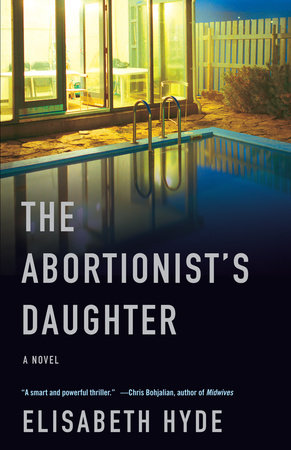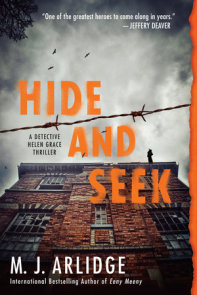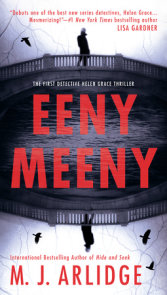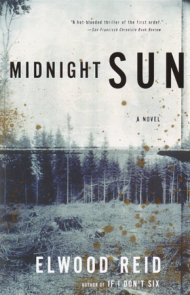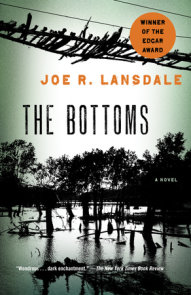READERS GUIDE
“Do you remember the excitement you felt when you read Presumed Innocent and discovered Scott Turow? I felt exactly that way as I read The Abortionist’s Daughter. Elisabeth Hyde is a dynamic storyteller and an elegant stylist–and I savored every moment of this smart and powerful thriller.”—Chris Bohjalian, author of Midwives and Before You Know Kindness
The introduction, discussion questions, suggestions for further reading, and author biography that follow are intended to enhance your group’s reading of Elisabeth Hyde’s The Abortionist’s Daughter. We hope they will provide you with new angles from which to approach and discuss this powerful novel.
Introduction
Two weeks before Christmas, Diana Duprey, an outspoken abortion doctor, is found floating in her pool, a bruise the size of a golf ball visible through her dark curls. A national figure, Diana inspired passion and ignited tempers, never more so than on the day of her death.A richly layered, compulsively readable novel about a murder in a small Colorado town, The Abortionist’s Daughter makes us think about the choices we make and the way their unintended consequences ripple through our lives.
Questions and Topics for Discussion
1. While the book centers on the murder of Diana Duprey, Elisabeth Hyde has chosen to name it The Abortionist’s Daughter? Why do you think she chose this title? Did the title affect your reading of the book?
2. Discuss the marriage of Diana and Frank. How did their personalities impact their interactions? Do you think that they had a strong marriage? Why or why not?
3. At the time of Diana’s death, her relationship with Megan is strained at best. Do you think that their inability to communicate is a standard mother-daughter issue or do you think that it is caused by something more?
4. Although Ben has died many years before the events of the novel, his death continues to affect Frank, Diana, and Megan. Discuss how. How does Hyde make Ben’s continued presence felt in the Thompson household?
5. The last thing that Megan says to Diana is “have fun killing babies [pp. 19, 249]”. Why do you think that Megan chose to attack her mother in this way? Does Megan disagree with her mother’s decision to perform abortions?
6. Although Frank Thomson has been a prosecuting attorney for more than twenty years and should know better, he cleans his house while it is a crime scene. What are his possible reasons for doing this? What did you think about his decision to clean up?
7. When Megan is driving to her house after learning of her mother’s death, Hyde writes, “The Big Thing that they’d always lived under the shadow of had happened. It was real. It didn’t seem real, but it was” [p. 29]. Diana continued performing abortions despite the knowledge that doing so put her life at risk. What do you think motivated her decision to do so?
8. What do you think that Megan saw in Bill when she decided to date him? What do you think of Bill? Does your opinion change during the course of the novel?
9. Early into their relationship, Bill and Megan begin to have unprotected sex. Why do you think that Megan is so willing when she, of all people, should know better? Do you think that she is rebelling against her mother?
10. Diana continues to see Bill after he and Megan are no longer dating. What are her motivations for doing so? Why is it so important for Bill to keep in contact with Diana?
11. It seems like all of the characters in the novel have something to hide. How does this affect the investigation? In your opinion, who is hiding the most shocking secret?
12. Why does Huck hold a grudge against Frank Thompson? Is he justified in doing so? Does Huck’s grudge alter his conduct during the investigation?
13. Both Huck and Megan have much to lose by being in a relationship. Explain. Why do you think that they become involved? What do you think that they see in each other?
14. Discuss Huck’s relationship with Carolyn. How did they end up together? Were you surprised when their relationship ended? Why or why not?
15. When we first encounter Megan, she’s on drugs and has just had a juvenile fight with her mother. How much does she grow during the course of the novel? Is this the direct result of her mother’s death, or are there other reasons as well? What are they?
16. Many of the characters in the novel end up making gross miscalculations. Discuss what some of these miscalculations are. In your opinion, which one ranks the worst? Why?
17. Were you able to figure out who killed Diana? What were the clues that lead you to this discovery? How did the motives of each of the suspects compare throughout the book?
18. Rose experiences pressure about her pregnancy from nearly everyone she knows. Why is her decision so significant to the other characters in the novel? What does she ultimately decide, and why?
19. While the issue of abortion certainly plays an important role in The Abortionist’s Daughter, Hyde addresses other hot button issues. What are they? Do you feel any differently about any of them after reading this book? How so?









